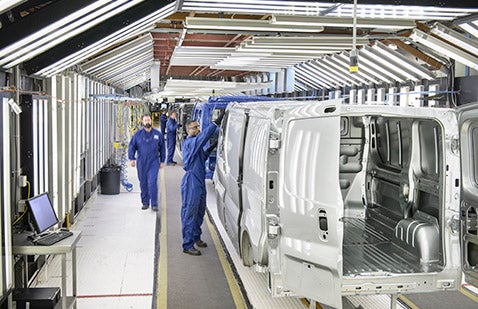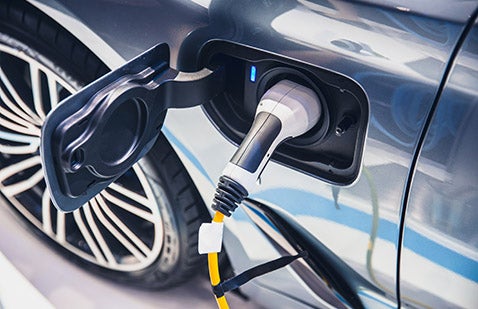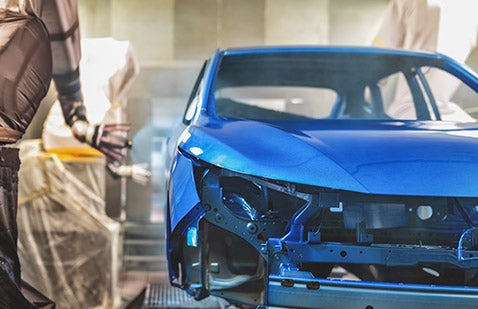Autonomous Coatings

As the automotive industry transforms vehicle designs to meet emerging mobility trends related to autonomous vehicles, PPG has continued to develop innovative offerings to meet the needs of this new world. This innovation is built on PPG's long history of providing paints and coatings to help automotive manufacturers that protect and beautify vehicles.
Additionally, through PPG Traffic Solutions, PPG is moving the world forward with innovative coatings applied to bridges, roadways and public infrastructure.
Advanced coatings for autonomous vehicles
With autonomous vehicles being one of the primary mobility trends, the industry expects greater needs for advanced coating technologies. For example, increased vehicle utilization by a broader number of passengers will demand higher durability and cleanliness of interior surfaces.
As well, interior surfaces will become increasingly SMART, thus requiring coatings to provide increased functionality. Coatings will therefore play an integral role in ensuring that the interiors are clean, functional, and can withstand repeated wear and tear.
Coatings for rethought vehicle interiors
The growth of electric vehicles has led many OEMs to rethink the way vehicles are designed. For example, paying closer attention to a vehicle’s interior, which need to be easier to clean, resistant to contaminants from previous occupants and have embedded technologies. PPG can deliver functional, conductive and tactile coatings for vehicle interiors that enhance the look, feel, comfort and utility of surfaces, including touchscreens.
For this need, PPG has transparent protective coatings, anti-fingerprint, anti-glare, anti-reflective coatings and soft-touch paints that can be combined into layered, "pre-stacked" solutions for reduced complexity and ease of application.
Optimizing coatings for LIDAR visibility
PPG is pioneering the development of paints and related coatings that will improve vehicle and infrastructure visibility to radar and light detection and ranging (LIDAR) sensors used in autonomous driving systems. The company has designed coatings with enhanced LIDAR vehicle detection that enables improved visibility and reliability for dark colors or in challenging environmental conditions.
Conventional automotive coating vs. enhanced NIR coating
- Light absorption and sensor detection
Coatings will be crucial to the variety of sensors that will allow vehicles to communicate with each other, to see each other, and to detect obstacles and the path of roadways. In a test, a black car reflected back just six percent of the near infrared signal that a white car did, making it dramatically less “visible” on the road.
- Enhanced dark color vehicle detection
We have designed coatings that will have enhanced dark color vehicle detection that allow the light to penetrate down toward a reflective under-layer. The signal “bounces off” this layer and returns to the sensor instead of being absorbed. This coating leverages commercially-proven technology from PPG’s aerospace business that functions in the same light- and heat-reflective manner. PPG could utilize these paints not only for cars, but also for infrastructure, so that standing structures like bridges can be clearly identified and precisely measured by a car’s sensors.
- Managing the reflectivity of different wavelengths
PPG has developed a coating technology that lets its users better manage the reflectivity of specific wavelengths, and we expect to market improved coatings that will absorb less infrared light and still provide excellent color and appearance. PPG will also produce improved coatings that enhance the radar reflectivity and transmission properties of plastic and composite substrates.
- Easy-clean composite coatings and anti-fingerprint coatings
PPG is creating an easy-to-clean coating technology that allows dirt and water to efficiently wash away from sensor lenses, eliminating obstructions that could be caused by snow, ice or debris. In addition, anti-fingerprint coatings will be utilized on the interior tech displays to ensure a clean and engaging experience for passengers.
- Radio frequency
Another area where coatings will prove important in advanced mobility is in minimizing radio frequency leakage. Electromagnetic signals can drift and bleed into one another, creating cross talk that can degrade equipment functionality. PPG’s technology will ensure that signals do not impair performance.






